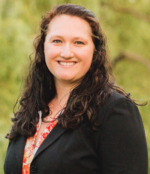Development of SEBoK v. 2.1
This version of the SEBoK was released 31 October 2019. This is a significant release of the SEBoK in which there are new articles, updated articles, and new/or improved features. There has also been a significant effort to further edit some of the small annoyances that have existed from previous releases. Additionally, there have been some personnel changes and those are reflected on the BKCASE Governance and Editorial Board page.
One major change in direction for the SEBoK is that articles will include author bylines on the articles which had significant contributions from only a few authors. We are in the process of going back in time to determine the major contributions of past articles and include the bylines for those authors. Moving forward, articles contributed by authors will carry bylines. It is our hope that this will provide the authors the deserved recognition for their contributions, and will prompt others to make new contributions to this ever expanding body of knowledge.
Content and Feature Updates for v. 2.1
This section provides a summary of changes for SEBoK v. 2.1. See letter from the Editor for a wider discussion of the changes and future plans.
New topic articles have been added to the SEBoK. In Part 1 there are new articles on Digital Engineering, Set-Based Design, and Model-Based Systems Engineering Adoption Trends 2009-2018. In Part 3, there is a new article on Mission Engineering. It is our intent to further mature these topics in the next release. In Part 6, the System Resilience and Human Systems Integration articles have been substantially updated. In Part 4, Capability Engineering was also updated with new content.
SEBoK functionality has been improved to make it more multimedia friendly. If you hover over a glossary item, a bubble opens with the glossary definition for that word instead of simply informing you that it is a glossary item. You can still click on the word and be taken to the glossary and view source materials and discussion, but it is not necessary.
The initial version of the SEBoK was created by a team of over 70 individuals from around the globe and, at the time, it was not realistic to provide authors for individual articles. When an author has worked on a specific article in the last several years, the release history has included this individual's contributions. However, the Editor in Chief and Editorial Board have agreed that the time has come to include authors for individual articles. You will see "by lines" at the top of articles to give credit to the authors. Note that "lead authors" were the primary contributors to the current version of the article. Contributing authors may have written a small section or may have been major contributors to early versions of the articles and are receiving credit for their earlier work.
You will also notice on the Acknowledgements and Release History page, a video from the Editor in Chief. SEBoK articles can now include video. We hope to begin adding this form of content in the coming releases.
Finally, there is a version 2.1 PDF available on the Download SEBoK PDF page.
Editorial Board
The SEBoK Editorial Board is chaired by an Editor in Chief, supported by a group of Associate Editors. The Editorial Board for v. 2.1 is listed in Tables 2, 3, and 4 below.
| SEBoK Editor in Chief | |
|---|---|
|
Robert J. Cloutier University of South Alabama Responsible for the appointment of SEBoK Editors and for the strategic direction and overall quality and coherence of the SEBoK. | |
| SEBoK Managing Editor | |
|---|---|
|
|
Nicole Hutchison
Stevens Institute of Technology Responsible for the the day-to-day operations of the SEBoK and supports the Editor in Chief. |
Each Editor has his/her area(s) of responsibility, or shared responsibility, highlighted in the table below.
| SEBoK Part 1: SEBoK Introduction |
|---|
University of South Alabama Responsible for Part 1 |
| SEBoK Part 2: Foundations of Systems Engineering | |
|---|---|
| Lead Editor: Gary Smith
Airbus |
Assistant Editor: Dov Dori
Massachusetts Institute of Technology (USA) and Technion Israel Institute of Technology (Israel) Responsible for the Representing Systems with Models knowledge area |
| Assistant Editor: Duane Hybertson
MITRE (USA) Jointly responsible for the Systems Fundamentals, Systems Science and Systems Thinking knowledge areas |
Assistant Editor: Peter Tuddenham
College of Exploration (USA) |
Missouri University of Science & Technology (USA) Responsible for the Systems Approach Applied to Engineered Systems knowledge areas. | |
| SEBoK Part 3: Systems Engineering and Management | |
|---|---|
| Assistant Editor: Barry Boehm
University of Southern California (USA) Jointly responsible for the Systems Engineering Management and Life Cycle Models knowledge areas |
Assistant Editor: Kevin Forsberg
OGR Systems Jointly responsible for the Systems Engineering Management and Life Cycle Models knowledge areas |
| Assistant Editor: Gregory Parnell
University of Arkansas (USA) Responsible for Systems Engineering Management knowledge area. |
Assistant Editor: Garry Roedler
Lockheed Martin (USA) Responsible for the Concept Definition and System Definition knowledge areas. |
| Assistant Editor: Phyllis Marbach
Incose LA (USA) |
Assistant Editor: Ken Zemrowski
ENGILITY Responsible for the Systems Engineering Standards knowledge area. |
| SEBoK Part 4: Applications of Systems Engineering | |
|---|---|
| Lead Editor: Judith Dahmann
MITRE Corporation (USA) Jointly responsible for Product Systems Engineering and Systems of Systems (SoS) knowledge areas |
Assistant Editor: Michael Henshaw
Loughborough University (UK) Jointly responsible for Product Systems Engineering and Systems of Systems (SoS) knowledge areas |
The Aerospace Corporation Responsible for the Enterprise Systems Engineering knowledge area. | |
| SEBoK Part 5: Enabling Systems Engineering | |
|---|---|
| Assistant Editor: Emma Sparks
Cranfield University Jointly responsible for the Enabling IndividualsandEnabling Teams knowledge area |
Assistant Editor: Rick Hefner
California Institute of Technology |
| Assistant Editor: Tim Ferris
Cranfield University |
Assistant Editor: Bernardo Delicado
MBDA / INCOSE |
| SEBoK Part 6: Related Disciplines | |
|---|---|
| Lead Editor: Alice Squires
Washington State University (USA) | |
| SEBoK Part 7: Systems Engineering Implementation Examples | |
|---|---|
| Lead Author: Clif Baldwin
FAA Technical Center Responsible for Part 7: Systems Engineering Implementation Examples, which includes Case Studies and examples. | |
| Graduate Reference Curriculum for Systems Engineering (GRCSE) |
|---|
St. Martin's University (USA) Associate Editor for SEBoK. |
Student Support
With SEBoK v. 2.1, the Governing Board has hired a student to support the Editor in Chief and Managing Editor. Madeline Haas, a student at George Mason University, is currently supporting the SEBoK and we gratefully acknowledge her exemplary efforts.

